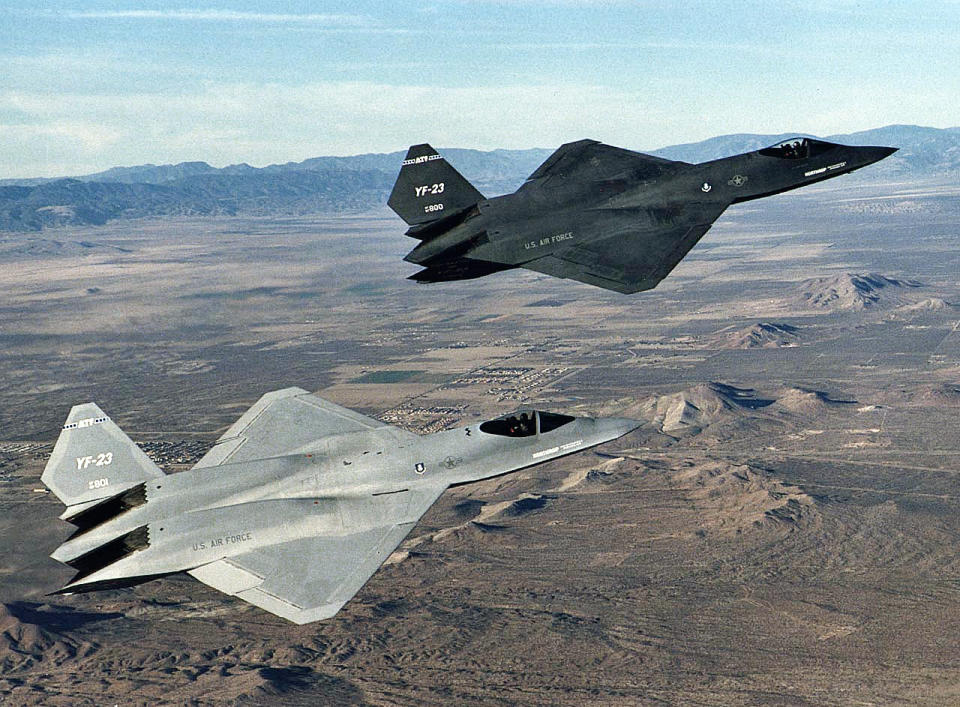Should the Air Force Have Picked the F-23 Instead of the F-22?
In 1991, the U.S. Air Force staged a competition with far-reaching consequences. It was ta fly-off between the Lockheed YF-22 and Northrop/McDonnell Douglas YF-23 demonstration fighters. The YF-22 won the competition and it became what we know today as the F-22A Raptor.
But did the best plane win?
In a new article, the National Interest looks back at the Advanced Tactical Fighter (ATF) competition. Back then it was meant to pick just one of the two competing planes to become the replacement for the F-15 Eagle, with the Air Force anticipating that it would buy 750 fighters (in reality it bought nowhere near that many Raptors). Each team hand-built two prototypes for the competition. And while the Lockheed YF-22 was declared the winner in April 1991, many analysts in the years since then have argued that Northrop's YF-23 was truly the better plane.
While the two planes were about equal in weapons load and avionics, Northrop's design had better stealth and longer range. That range bonus would have been particularly appreciated today, with the rising influence of China. The vast distances involved in covering the Asia-Pacific are now factoring into how to design the Raptor's proposed replacement.
However, Northrop brought some baggage of its own to the table back in the 90s. The company had reputation for "test fraud, contract suspension, and fines," the National Interest says. The company's work on the B-2 had incurred huge cost overruns, and the Air Force may have been nervous about repeating the experience.
So why did the Air Force pick the YF-22? Lockheed, by default, appeared that it would manage the fighter program better than Northrop would. The Cold War was over and the defense budget was already headed into decline. The Air Force knew that if it was going to ask Congress for money to fund a fighter that no longer had an opponent, the program had better be well managed.
Another reason the YF-22 won: marketing. Lockheed put the YF-22 through a vigorous flight test schedule that really showed off the fighter's dogfighting abilities, including an angle of attack of 60 degrees and sharp 9g turns that pushed the limits of human endurance. While the YF-23 was likely just as maneuverable as its competitor, Northrop didn't go out of its way to demonstrate that it could.
Did the U.S. miss an opportunity in not picking the YF-23? Perhaps, but in the long run maybe it doesn't matter much. Both were very good fighters, and the F-22 has had a very good run. Perhaps the F-23 would have been a fiscal disaster, or perhaps Northrop would have done better than Lockheed. We'll never really know. In the meantime, there really hasn't been a situation where the F-22 has come up short in ways the "F-23" would have not.
In any case, the two companies will likely compete again-this time to build the Raptor's replacement-in the near future. Northrop Grumman shook off some of its old demons to win the contract to build the B-21 Raider future bomber, so it should be a stiff competitor once again.
Here's a documentary on the YF-23 on YouTube:
Read more at the National Interest.
You Might Also Like


